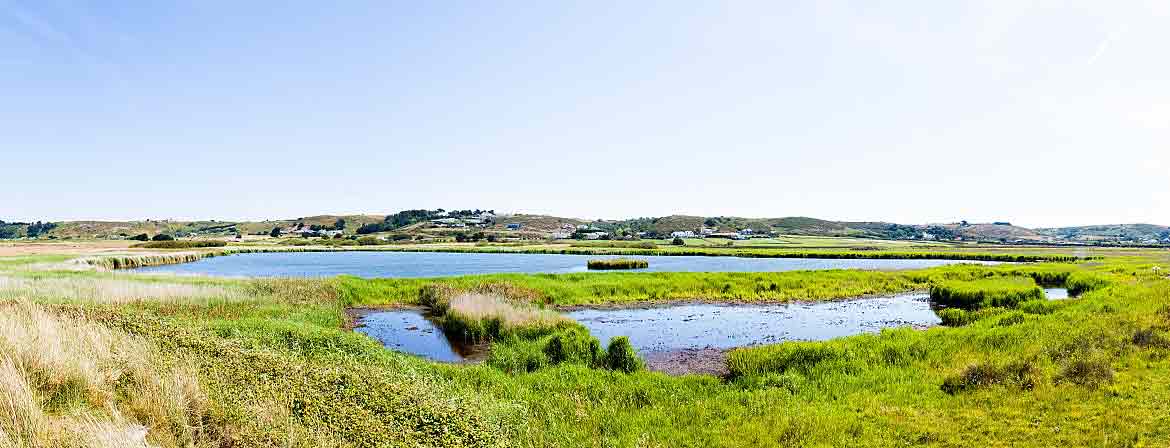Nature – Jersey National Park
Its southerly location gives Jersey a more temperate climate than the majority of the British Isles, resulting in an abundance of rare and exciting plants and wildlife. The States of Jersey have designated a large area close to The Atlantic Hotel, known as Les Mielles, as a protected conservation area and is part of Jersey National Park.
Spring sees the emergence of bluebells, primrose and stitchwort, as well as daffodils, dwarf pansies and camellias. Wheaters and sand martins arrive, and are followed by pied flycatchers, redstarts and yellow wagtails.
Summer welcomes puffins, razorbills and the common tern to the headlands, along with swallows, swifts and cuckoos to the inland areas. The woodlands attract chiffchaffs, blackcaps, willow warblers and goldcrests, while the country lanes are resplendent with hawthorn, sorrel, campion and hogweed. St Ouen’s Bay yields a small yellow flower called the Lady’s Bedstraw, which is used to fill mattresses, the common centaury and evening primrose, as well as sea holly, the yellow horned poppy and the sand crocus – a very rare variety – which opens when the sun shines.
Autumn brings a new wave of rare birds, including the hoopoe and sedge warbler, to St Ouen’s Pond and little terns and little gulls to St Catherine’s breakwater. The cliffs are adorned with golden rod, saw-wort, betony and bell heather, while the hedgerows once again reveal red campion and hogweed.
Winter months see Jersey play host to curlews, bar-tailed godwits, oystercatchers, grey plovers, redshanks and sanderlings, as well as over 1,000 Brent geese. In mild conditions, more than 100 species such as honeysuckle and broom are evident, before the daffodils, gorse and camellias re-appear.
Les Mielles – a ‘special place’
Les Mielles – the area of St Ouen’s Bay bounded to the east by the View Line – was created in 1978 to protect its wildlife and natural landscape. The area accounts for 8% of Jersey’s surface and is composed mainly of sand dunes, which provide a sheltered habitat for species of animals and plants which are more common in Mediterranean countries than the British Isles. Les Mielles is home to Les Quennevais – a small sand dune system considered to be the fourth richest in Europe for its plant life – where over 400 rare species of plants are to be found. A wide variety of insects are native to this area, as is the beautiful Green Lizard.
Les Mielles has great agricultural significance, as its southwest-facing slopes, or ‘cotils’, produce some of the earliest crops of Jersey Royals, and its historical importance is underlined by the archaeological artefacts dating back to the Neolithic period. To ensure that the beauty of Les Mielles remained uncompromised, the 1978 designation specified a series of land-use zones – for conservation, recreation and agriculture – and these strict rules are preserving this natural environment for generations to come.
